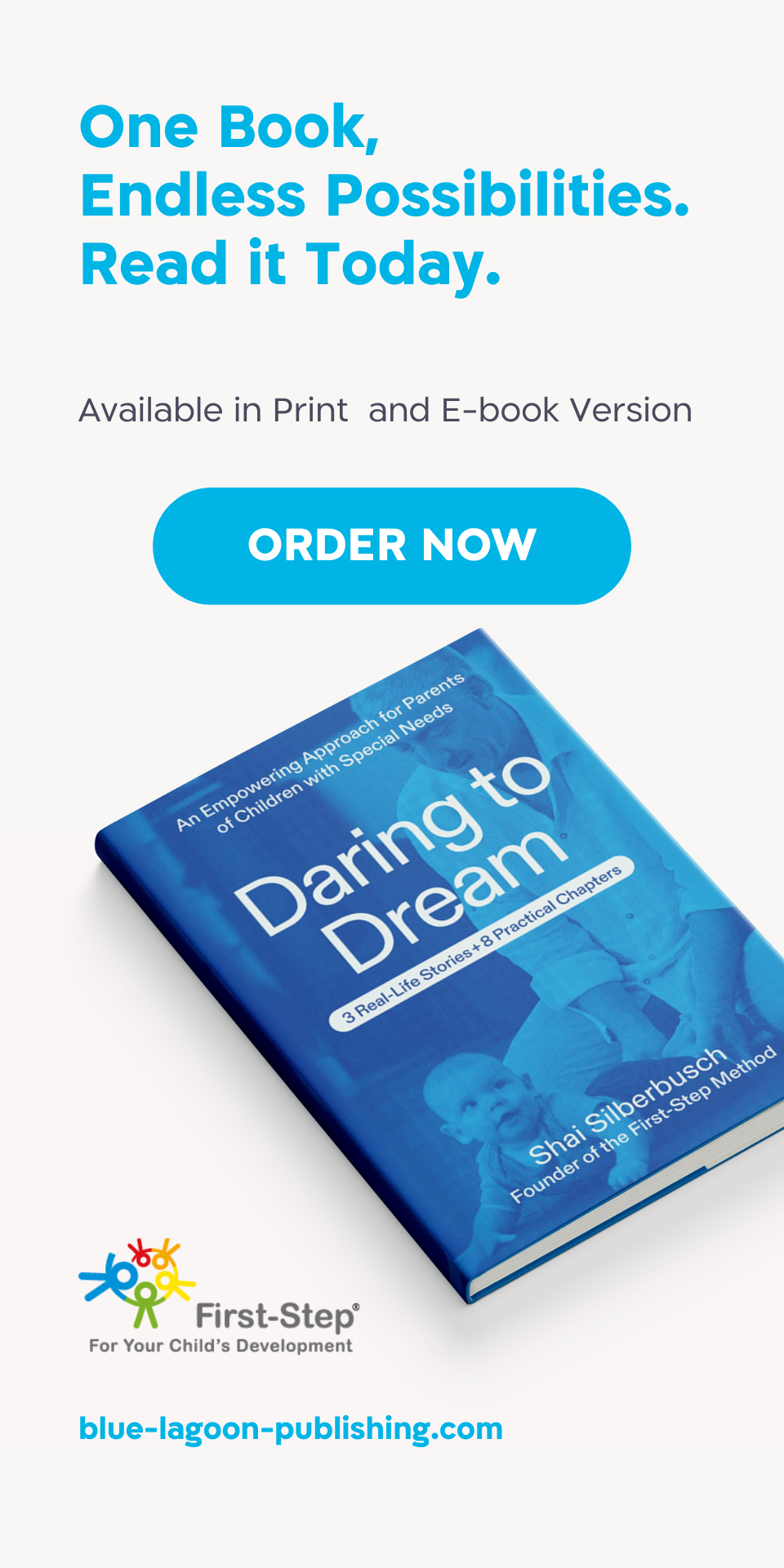Most premature babies are born without functional maturity in their nervous system and reflexes. In this situation of course there is no substitute for the human warmth and natural processes that occur in the womb. But with increasing physiological knowledge about events in the womb, we can suggest a substitute for those conditions outside the womb – like the idea of an incubator and with the help of exercises. We teach the preemie’s brain to use its body better.
substitute for the human warmth and natural processes that occur in the womb. But with increasing physiological knowledge about events in the womb, we can suggest a substitute for those conditions outside the womb – like the idea of an incubator and with the help of exercises. We teach the preemie’s brain to use its body better.
At First Step, our attitude to preemies is in terms of the development stage, and the chronological age. We take the baby back to all stages of development in the womb, in the reflexes and sensory systems, and create conditions resembling the mother’s womb, while giving deep contact in all parts of the body.
Many parents are unaware of this – but it is possible to work with premature babies in the nursery and thus to help baby close the developmental gap caused by premature birth and to develop better.
The five chief principles with which we work with preemies at First Step are these:
- Total wrapping, touch – the baby-carrying sling serves as an artificial womb and to some extent offers elements resembling the incubator, such as closeness and warmth. Wrapping and touch allow the baby to sleep longer hours, with deep touch that mimics the stimulus of the womb muscles.
- Movement – the balance system starts operating while the fetus is in the womb. When the fetus is prematurely born, it receives insufficient movement, and movement is a vital condition for development and is a tool for soothing.
- Deep pressure – developing the brain’s ability to sense the different organs of the body, achieving equilibrium in muscle tone, strengthening it or moderating it if it’s too enhanced. This process also helps in building bones.
- Repetitive sound –sounds resembling the mother’s heartbeat, and that recall the womb environment.
- Cradling and security – paralleling sensations in the womb.
Further recommendations
- After baby is taken out of the incubator and released from hospital it is still crucially important to continue providing treatment with the five principles.
- Patting – an excellent way of soothing the baby, developing a sense of rhythm and monotony which calms and balances the brain waves, making deeper sleep.
- Breathing – many premature babies have breathing problems. So we train parents with exercises that help baby’s breathing organs function correctly, assist them to develop head lifting, straightening out or rounding their back, and the importance of being able to put their head down on the side, so the airways are not blocked.
- Equilibrium – providing exercises for head tolling on both sides while lying on the back, through the seeking reflex that teaches the head to be on both sides and in the middle.
- Cradling – by placing the baby on pillow or a pouf we obtain a cradling effect and elements of movement within space. It’s a very soothing position, that reduces as unnecessary stress, and teaches baby to experience the movement of their hands and in every direction. It prepares the body for movement and changing movement within space.
It is worth noting that many preemies whose parents implemented these recommendations developed better than other babies who were born at full-term. A huge difference is discernible between a baby who spends most of the time on the back gazing at the ceiling or seated in a trampoline, and the baby who receives stimulus of movement in space (held by the parent, or in a baby sling) and has sensory experiences like deep touch, massage, who sleeps for longer periods, lies on her stomach, develops head-lifting and so on. This can show us that there’s immense importance to the environment where the baby grows, and the quality of the conditions they have at the very start of life.



